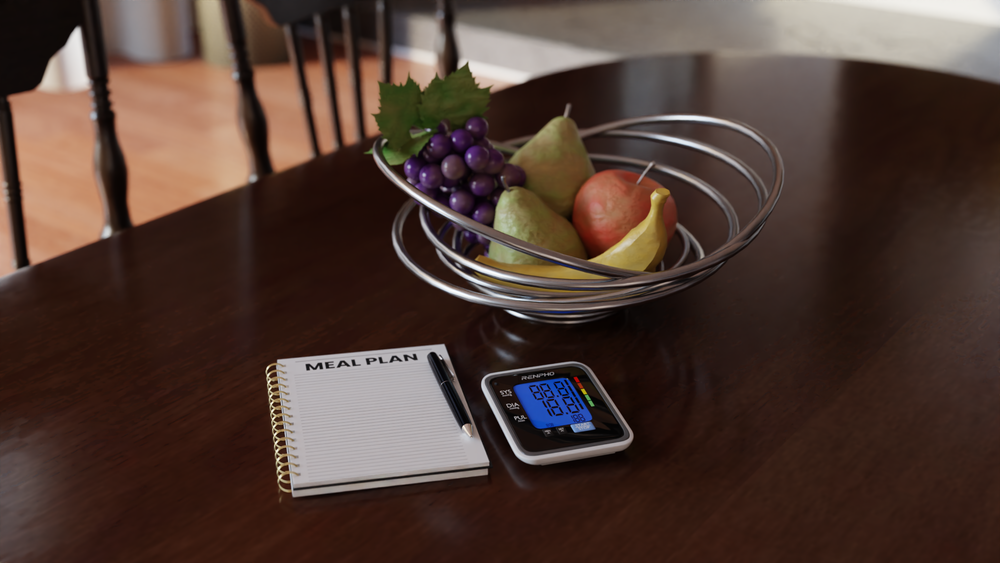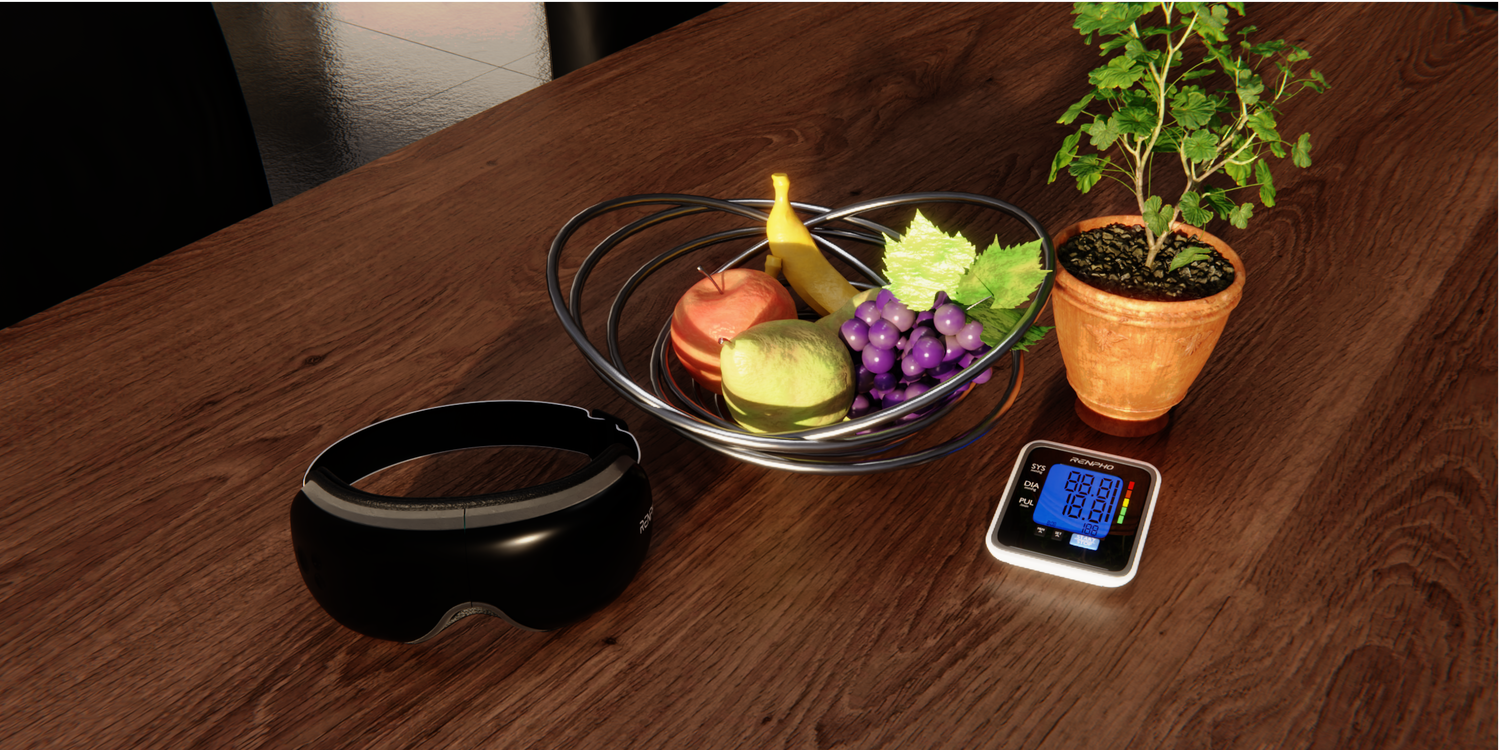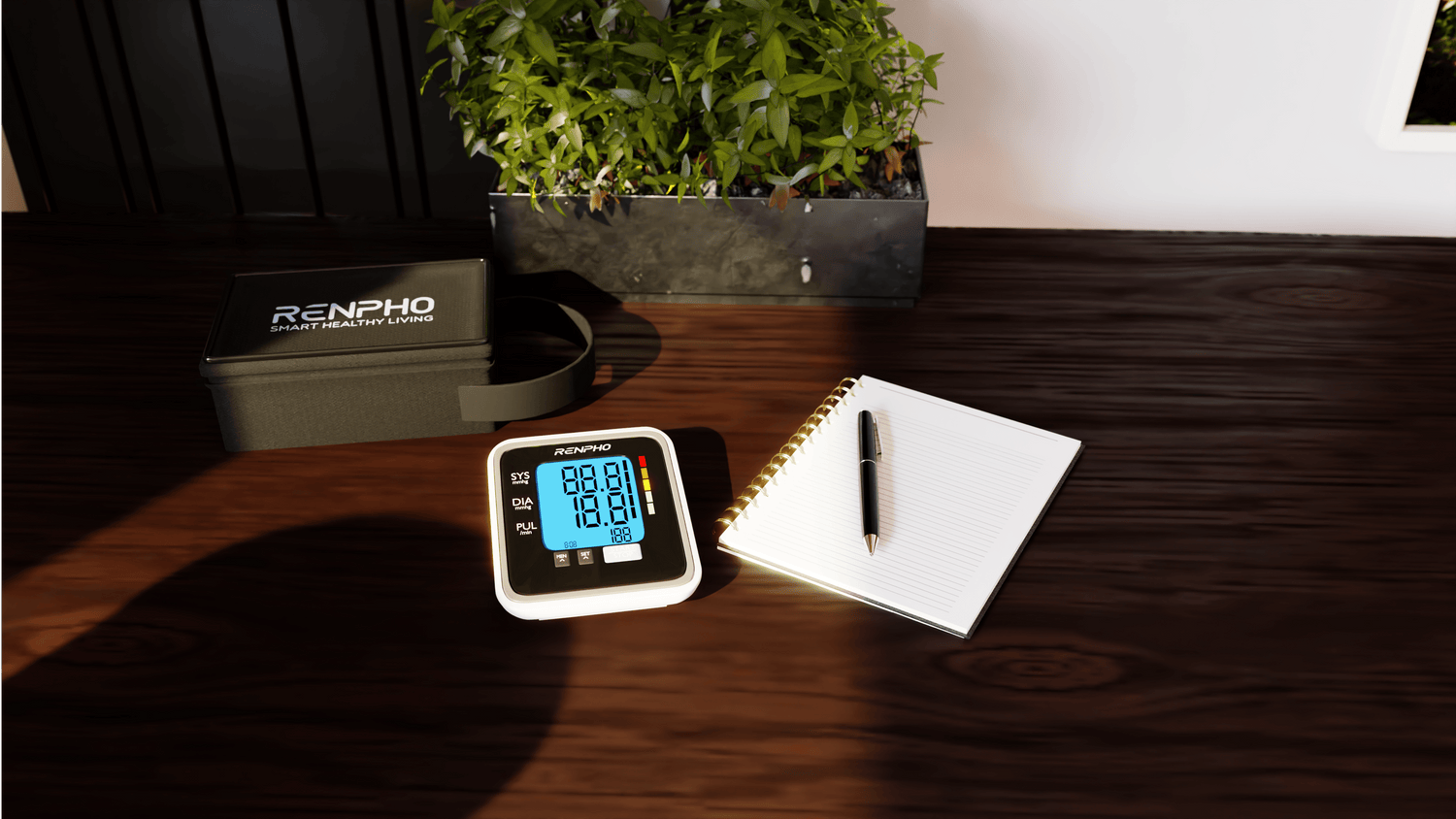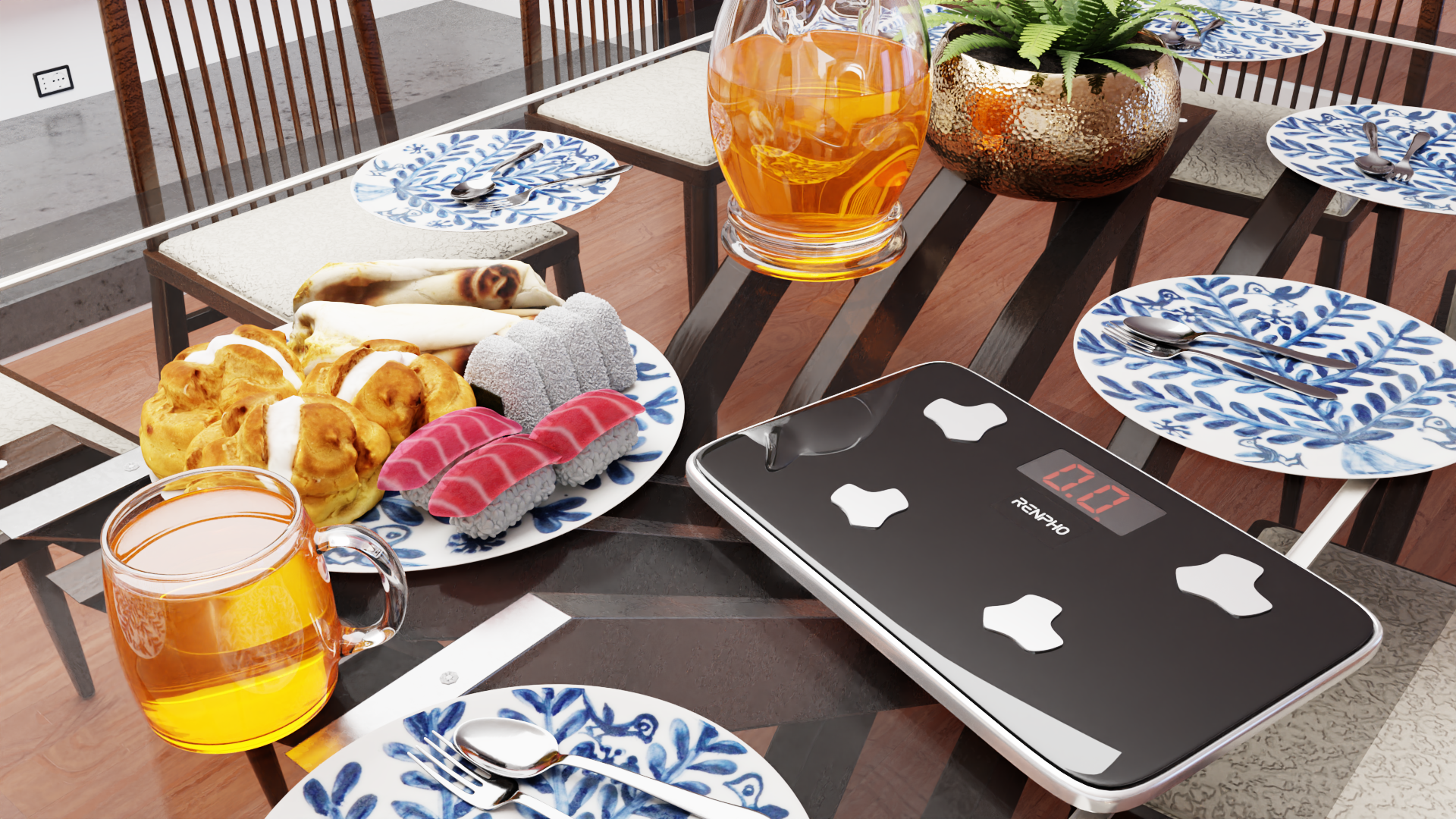5 Tips for an Effective Meal Plan for Lowering High Blood Pressure

Stay tuned to our latest news
High blood pressure, or hypertension, is a prevalent health condition that can lead to serious complications if left unmanaged. Implementing an effective meal plan is another effective strategy for achieving or maintaining healthy blood pressure levels. By making thoughtful choices about what we eat, we can significantly reduce the risk of hypertension and promote cardiovascular health.
So, here are 5 essential tips for creating a meal plan specifically aimed at lowering high blood pressure. By incorporating these tips into your dietary routine, you can take proactive steps toward managing your blood pressure levels and improving your overall well-being.
What Causes High Blood Pressure?
When exploring the causes of hypertension, it is important to remember that there are several factors that can contribute to it. A person can get high blood pressure due to one or multiple factors. With that said, here are some of the possible causes you need to keep in mind.
Genetics and family history play a significant role in determining an individual's risk of developing high blood pressure. If one or both of your parents have hypertension, the chances are higher that you will also have it. Genetic factors impact how the body regulates blood pressure and the blood vessels’ response to certain situations.
Moreover, leading a sedentary lifestyle can also be a significant contributor. Lack of physical activity can lead to weight gain and obesity, directly linked to hypertension. Regular exercise helps to maintain a healthy weight, strengthen the heart, and improve blood circulation — reducing the risk of high blood pressure.
Your diet can also influence blood pressure levels. Consuming a diet high in sodium and low in fruits and vegetables can increase blood pressure. Sodium causes the body to retain water, which raises blood volume and subsequently blood pressure. On the other hand, a diet rich in fruits and vegetables provides essential nutrients, including potassium and fiber, which help regulate blood pressure.
5 Tips for an Effective Meal Plan to Ease High Blood Pressure
Despite being a common condition affecting millions of people worldwide, hypertension can often be avoided or effectively managed through lifestyle modifications, including the implementation of a well-designed meal plan. By creating a diet that specifically focuses on regulating blood pressure, individuals can take proactive steps toward preventing the effects of high blood pressure. However, it is important to consult a physician or dietician first for a diet that caters to your specific needs and lifestyle.
-
Track the Food You Eat

Tracking what you eat is a critical and effective strategy for creating a meal plan specifically designed to lower high blood pressure. By diligently keeping a record of your daily food intake, you gain valuable insights into your eating habits and can identify potential areas for improvement. A food diary or a RENPHO Calibra 1 Smart Nutrition Scale specifically designed for tracking nutrition can be highly beneficial tools and can help you better understand your overall dietary patterns.
One significant advantage of tracking your food is that it helps you become more mindful of your food choices, prompting you to pay closer attention to the nutritional content of the meals, snacks, and beverages you consume. This increased awareness can lead to conscious decision-making and healthier choices, especially when selecting foods that are low in sodium, saturated fats, and added sugars — factors that can contribute to high blood pressure.
Moreover, a food tracking system can assist you in identifying potential triggers or patterns related to your blood pressure levels. For example, you may notice that certain foods or food combinations tend to cause spikes in your blood pressure readings. By tracking your meals and blood pressure measurements side by side, you can establish connections and make informed decisions about which foods to include or avoid in your meal plans. This personalized approach allows you to improve your diet according to your body's unique responses.
-
Avoid Salt (Sodium)

Salt, specifically sodium, can contribute to fluid retention and increase blood pressure levels. Consequently, decreasing your overall salt consumption is a key aspect of an effective meal plan for lowering high blood pressure. It is essential to be mindful of your salt consumption and take steps to reduce it.
One tip is to read food labels carefully. Many processed and packaged foods contain high amounts of sodium, even ones that may not taste particularly salty. By checking the nutritional information on food labels, you can make informed choices and opt for lower-sodium alternatives. Look for products labeled as "low sodium," "no added salt," or "sodium-free." Additionally, be cautious of condiments, sauces, and dressings, as they can be major hidden sources of sodium. Consider making your own homemade versions using herbs, spices, and other flavor-enhancing ingredients instead.
Another helpful strategy is to choose fresh, whole foods as much as possible. Fruits, vegetables, whole grains, lean proteins, and legumes are naturally low in sodium and offer a wide range of health benefits. Incorporate these nutrient-rich foods into your meal plan to provide essential vitamins, minerals, and dietary fiber while keeping your sodium intake in check. When cooking at home, experiment with herbs, spices, and other flavoring agents to add taste without relying on salt.
Meal preparation plays a vital role in controlling sodium levels. By cooking meals from scratch, you have full control over the ingredients and can significantly reduce the amount of added salt. Instead of relying on salt for flavor, explore alternative seasonings such as garlic, onion, lemon juice, vinegar, or a variety of herbs and spices. These natural flavor enhancers can add depth and complexity to your dishes without the need for excessive sodium.
-
Add in Fiber Rich Foods

Aside from lowering your sodium intake, adding fiber-rich foods to your meal plan is an equally valuable strategy for effectively dealing with high blood pressure. Fiber offers numerous health benefits, including better heart health and regulating cholesterol levels.
Prioritize whole grains, such as brown rice, whole wheat bread, quinoa, and oats to boost fiber intake. They provide a more substantial amount of fiber compared to refined grains, which have had the bran and germ removed. When shopping for grain-based products, look for labels that indicate "100% whole grain" or "whole wheat" to ensure you're selecting the most fiber-rich options.
Incorporating a variety of fruits and vegetables into your meals is another way to add more fiber to your diet. These foods not only provide significant amounts of dietary fiber but also contain essential vitamins and minerals. Berries, apples, pears, broccoli, Brussels sprouts, and leafy greens like spinach and kale are excellent choices. Aim to include a colorful assortment of fruits and vegetables in your daily meal plan to maximize your fiber intake.
Legumes, such as beans, lentils, and chickpeas, are also rich in fiber and make for a nutritious addition to your meals. They are not only versatile but also provide plant-based protein, which can be beneficial for those following a vegetarian or vegan diet. Consider incorporating legumes into soups, stews, salads, or even as a meat substitute in dishes like chili or tacos.
Snacking on fiber-rich foods can also be a great way to increase your intake throughout the day. Incorporate snacks like nuts, seeds, and popcorn into your routine, as they offer a satisfying crunch along with fiber content. Additionally, consider adding chia seeds or ground flaxseeds to smoothies, yogurt, or oatmeal for an extra fiber boost.
As you increase your fiber intake, it's important to remember to drink an adequate amount of water. Fiber absorbs water and adds bulk to your stool, promoting healthy digestion. Staying hydrated helps ensure that the fiber can do its job effectively and aids in maintaining overall digestive health.
-
Avoid Processed Foods

Processed foods tend to have high amounts of sodium. It is essential to minimize their consumption, as they are notorious for their high amounts of added salt and harmful fats, significantly increasing the risk of developing conditions like hypertension.
The reason why most processed foods undergo various manufacturing processes that involve the addition of excessive amounts of sodium is to enhance their flavor and preserve them for longer periods. Excessive consumption can disrupt the delicate balance of salts in our bodies, leading to high blood pressure and, ultimately, increasing the risk of heart disease and stroke.
Processed meats, such as deli meats and sausages, are no different as they are also often loaded with sodium as part of their processing and preservation techniques. Similarly, ready-to-eat meals and pre-packaged items should be carefully examined for their sodium content before consumption.
-
Watch Out at Restaurants

Dining out at restaurants can make you prone to making unhealthy food choices but it is still possible for you to maintain a balanced diet. By following a few simple tips, you can ensure that you are making informed decisions that prioritize your health.
Firstly, researching menus ahead of time can be incredibly helpful. Many restaurants now provide their theirs online, allowing you to review what they have in advance. Look for dishes that include fresh ingredients and prioritize vegetables and lean proteins. By planning your meal in advance, you can avoid the temptation of less healthy options that may be displayed prominently on the menu.
At the restaurant, don't be afraid to ask your server about the sodium content of particular dishes. Sodium is often added to enhance flavor but is detrimental to our health when consumed in excess. By inquiring about the sodium content, you can make choices that align with your dietary needs.
Furthermore, when choosing your main course or side dishes, opt for fresh options whenever possible. This includes selecting salads, steamed vegetables, or grilled proteins instead of heavy, fried foods. These choices tend to be lower in calories and unhealthy fats, making them a smarter choice for your overall well-being.
Lastly, it's important to check how your food is prepared. Favor items that are grilled, boiled, baked, or steamed, as these cooking methods generally use less oil and retain more nutrients. Fried foods, on the other hand, tend to be high in unhealthy fats and can lead to weight gain and other health issues if consumed regularly.
Foods to Avoid with High Blood PressureMaintaining a healthy diet is crucial for managing high blood pressure, and being aware of the foods to avoid can significantly contribute to better blood pressure control and overall cardiovascular health. With that said, here are some more foods you need to keep watch of when you have hypertension:
Remember, it's always best to consult with a healthcare professional or registered dietitian first for personalized dietary recommendations regarding hypertension. |
Takeaway
High blood pressure is a prevalent health condition that can have serious complications if left unmanaged. However, by implementing an effective meal plan, you can achieve and maintain healthy blood pressure levels. By tracking food intake, avoiding excessive salt, incorporating fiber-rich foods, avoiding processed foods, and making mindful choices when dining out, you can take proactive steps toward managing your blood pressure levels and improving your overall well-being.
But do remember to consult with a healthcare professional or registered dietitian for personalized dietary recommendations and guidance in managing hypertension. By adopting a well-designed meal plan, individuals can significantly reduce the risk of hypertension and promote cardiovascular health.
Renpho Health Tips
-

5 Lifestyle Tips to Improve High Blood Pressure
October 18, 2023
Read more >
-

How to Use and Read Your Digital Blood Pressure Monitor?
October 9, 2023
Read more >
-

5 Biohacking Tips to Manage Your Blood Sugar and Increase Longevity
March 28, 2023
Read more >
-

How Food Scales Take Meal Prep to the Next Level
June 18, 2023
Read more >
-

10 Tips on How to Avoid Holiday Weight Gain
November 17, 2023
Read more >





